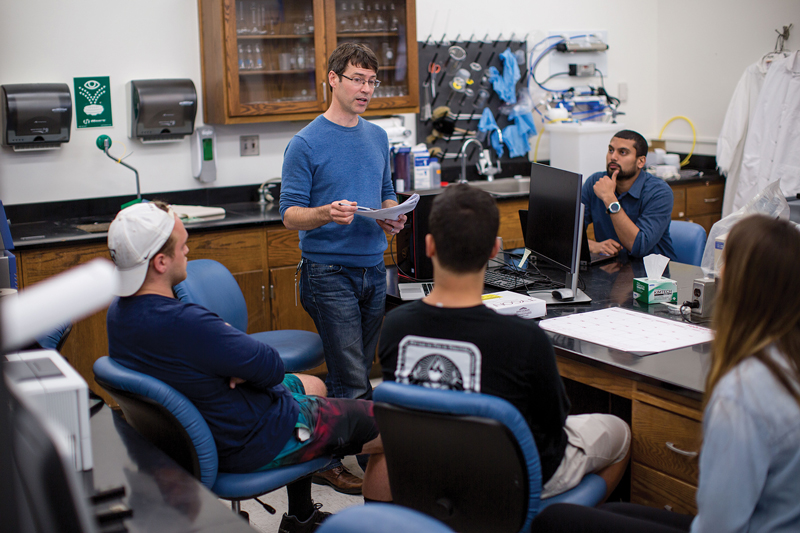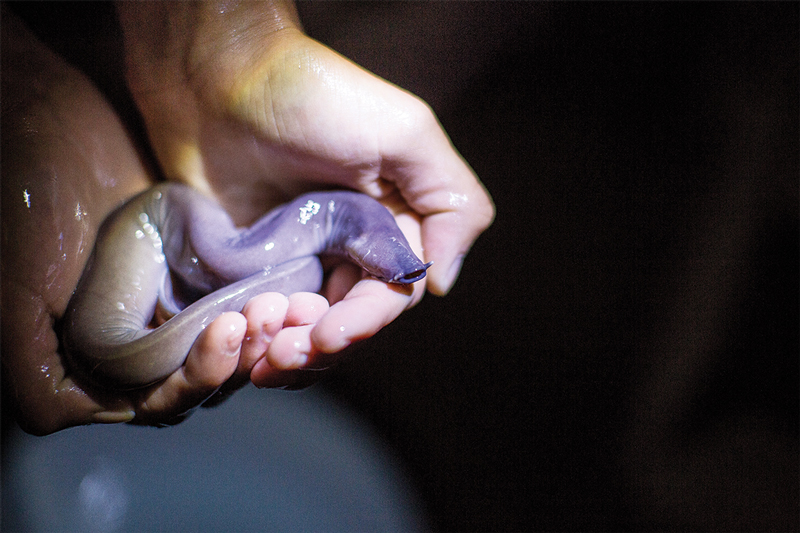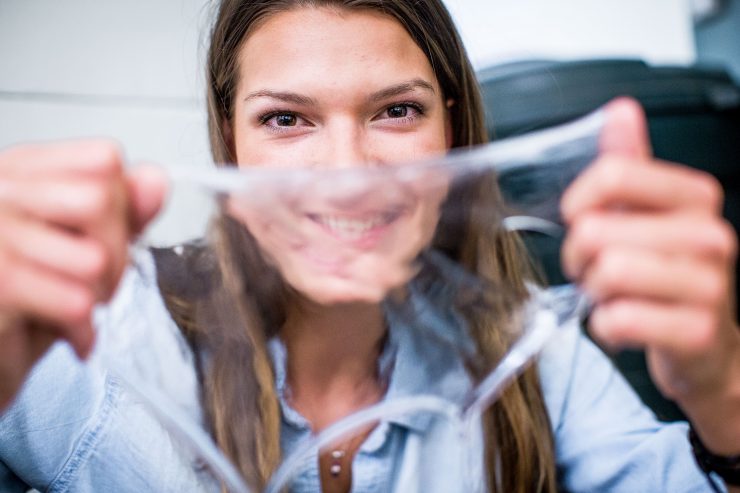The first time she saw one, Lauren Friend ’19 was repelled. “Maybe even disgusted,” she says. But over time, she has developed a healthy respect for her research subject, the humble hagfish, which despite its slimy appearance and scavenging nature wiggles its way into the hearts of researchers by steering them toward scientific breakthroughs.
“You have to appreciate what they can teach us,” the biochemistry major says.
Friend and her Chapman University student colleagues in the marine research lab of Douglas Fudge, Ph.D., have dived deeply into the bottom-dwelling world of this intriguing creature. Fudge has been hooked ever since he was a grad student. He considered focusing his research on squid, “but in the end, hagfish slime was something I couldn’t resist,” he says.

deep into the slippery world
of the hagfish, chasing insights
that hold gobs of promise.
No wonder. Once mistaken for a worm, with a skull but no vertebrae, lacking sight or a jaw, the hagfish can produce a jaw-dropping amount of slime as a defense against attack. Among other things, Fudge’s team is exploring just how all that slime gets produced. In the controlled conditions of the lab, students collect and then release a pre-slime substance called exudate, produced by glands on the hagfish. When it hits seawater, just a milliliter of the exudate instantly swells to encompass more than a liter of goo, which can clog the gills of potential predators.
“When you pull the slime from a bucket, it’s like holding a bag of water, except that there’s just no bag,” says Fudge, an associate professor of biology in the Schmid College of Science and Technology. “Somehow these fibers are holding this large volume of water.”
If fibers that are renewable and biodegradable could replace petroleum-based options, it would spark advances in manufacturing and disposal.
In the new Keck Center for Science and Engineering, Fudge’s lab houses more than 100 hagfish in specially designed tanks. Students join in the research, exploring how the hagfish move and escape attack as well as possible uses for their slime.
As Fudge holds up the pliable substance, silky strands elucidate why that slime has researchers so excited. Thousands of super-strong threads – each more than 100 times thinner than a human hair – weave throughout the goo. Like spider silk, these fibers are stronger than steel, on a per-weight basis. If the strands can be synthesized and mass-produced, they might provide an alternative to petroleum-based fibers like nylon and Kevlar.

“These are billion-dollar industries,” says Fudge, who notes that two industry collaborators are helping to fund his team’s work. Proprietary restrictions prevent him from detailing this branch of his research.
“It would be a big advance if these fibers that are renewable and biodegradable could replace petroleum-based ones that are problematic in both their manufacture and disposal,” Fudge adds.
Insights from the slime might also lead to advances in firefighting, anti-shark sprays, suspension gels for drugs – the possibilities seem limitless.
Fudge and his research colleagues have “a somewhat crazy hypothesis” about how hagfish create the framework for their slime. They think that the nucleus of a cell might act like a spinning wheel, twisting intermediate filaments into a single high-performance fiber 1 micron in diameter.
“If this idea is right, we should see the nucleus spinning in one direction when we look at it under the microscope,” Fudge says.
Meanwhile, a National Science Foundation grant is funding a project involving Chapman’s lab, seeking to identify the genes that produce the slime’s two components: mucous and threads.
“Knowing the genes involved will be helpful in trying to synthesize an artificial version of this amazing substance,” Fudge says.




